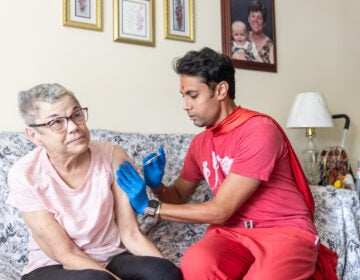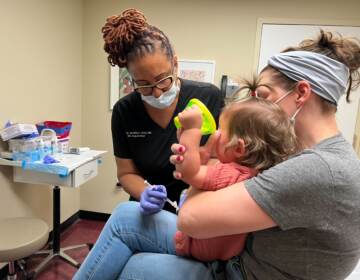Without a vaccine, researchers say, herd immunity may never be achieved
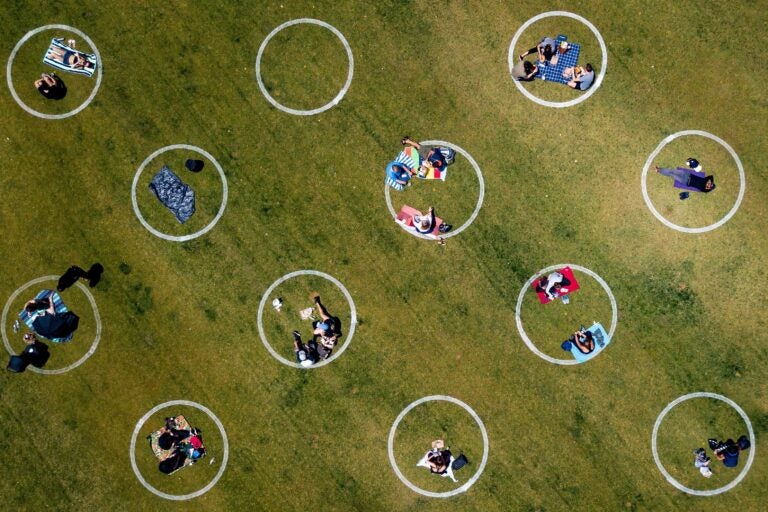
Public health officials advise social distancing strategies and masks, in part because the latest evidence suggests that catching the coronavirus, even if you're young, is risky business. A significant portion of COVID-19 survivors suffer fatigue, blood clots, fevers and other symptoms for weeks and months after clearing the infection. (Josh Edelson/AFP via Getty Images)
As the coronavirus continues to spread rapidly throughout the U.S. and beyond, many are wondering: How on earth will this end? In an interview televised this week, President Trump reiterated his belief that sooner or later the virus will burn itself out. “I will be right eventually,” the president told Fox News host Chris Wallace. “It’s going to disappear, and I’ll be right.”
But scientists are increasingly of the view that this virus will not disappear. In interviews and correspondence with more than a dozen researchers around the world, NPR found that the vast majority believes the virus will persist at some level for a long time in places like the U.S. and Europe.
And until there is an effective vaccine in widespread use, levels of immunity will never be high enough to achieve what’s called herd immunity, these researchers say. That’s the tipping point at which the disease begins to burn itself out because so many people are immune that it can’t continue to spread.
These scientists’ view that the virus will persist is based on growing evidence that immunity may not be as straightforward as first assumed and that the virus is spreading relatively slowly, while continuing to sicken and kill. A vaccine could still prevent the illness or reduce its severity, but it’s likely even that won’t wipe COVID-19 from the globe.
“I think it’s going to be with us probably forever at this point,” says Devi Sridhar, a professor of global public health at the University of Edinburgh. “It’s going to be with us, and it’s how we decide to live with it.”
The ‘take it on the chin’ approach
The idea of herd immunity has been around for decades. In the past, it has been used to describe an effect seen with vaccination — if vaccination rates for measles are high, for example, a single case cannot spread far into a community. The “herd” of people is protected even when not everyone has received the vaccine.
But with the outbreak of the coronavirus, the idea of natural herd immunity took hold in some circles. The theory, broadly speaking, is that should enough people become ill and then immune, the entire population will be protected. Estimates vary widely, but it’s generally thought that somewhere between 50% and 80% of a given population would need to have been infected by the coronavirus before such natural herd immunity could be achieved.
Herd immunity holds appeal in part because it does not require radical action such as social distancing.
“If the thing that is most important to you is not disrupting the economy, is not shuttering small businesses, is not causing economic instability so that people cannot eat — that is the solution you are going to glom onto,” says Jeffrey Shaman, a professor of environmental health sciences at Columbia University in New York City.
It was for those reasons that the conservative U.K. government toyed with the idea of herd immunity back in March, Sridhar says. Scientific advisers thought it would be futile to try to stop the coronavirus. Instead, some suggested trying to slow infections just enough to avoid overloading hospitals, while allowing the virus to spread through the population. It was the “take it on the chin” approach, as described by Prime Minister Boris Johnson.
Sridhar says the U.K.’s pandemic scientific advisory group back then was working from a playbook based on the flu. But COVID-19 is not the flu, and calculations showed that pursuing herd immunity would cause many thousands of deaths. The government hastily abandoned the strategy almost as soon as it had been floated.
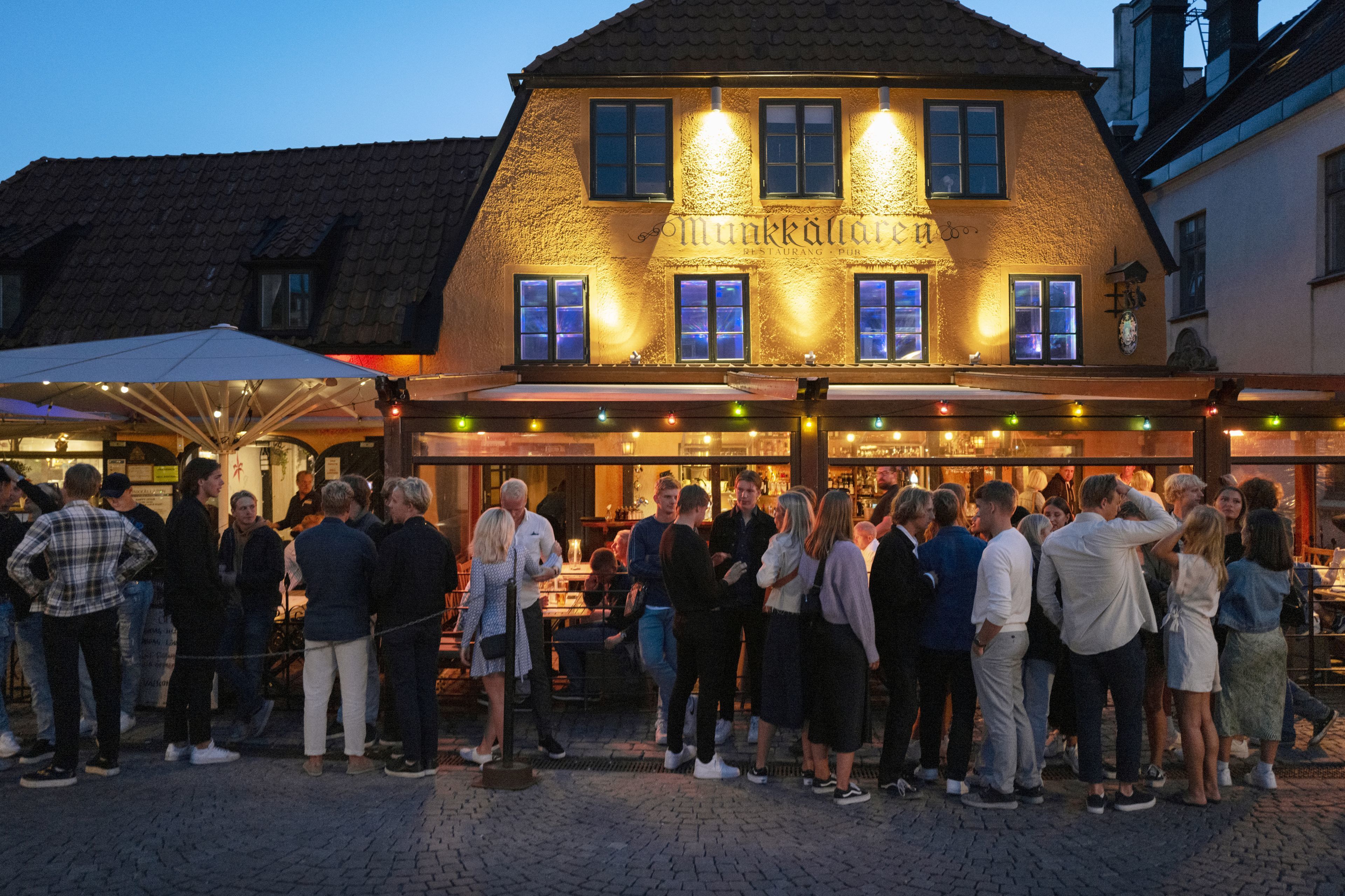
Sweden’s experience
Across the North Sea, however, Sweden continued to pursue an approach with the potential to achieve herd immunity — though the government never stated it as a goal. Swedish authorities recommended taking precautions at an individual level and banned gatherings of more than 50 people, but the nation stopped short of ordering restaurants and bars closed. In April, the Swedish ambassador boasted that Stockholm might achieve herd immunity by the end of May.
That never happened, Sridhar says. “Sweden is stuck at 6% for months now,” she says, in reference to the percentage of residents who have antibodies to the coronavirus. Meanwhile, the country has suffered economic devastation and far higher death rates than its Nordic neighbors.
The main reason herd immunity hasn’t been achieved, she suspects, is that to get there, many millions of Swedes would have to catch COVID-19. That could happen in the abstract, but in reality, most individuals deliberately try their hardest to avoid contracting the disease. “Nobody wants to be part of the herd,” she says.
Sweden is hardly alone. In many countries, blood tests for antibodies — a sign somebody has been infected with the coronavirus — find that the percentage of the population that tests positive for this indicator of immunity is in the single digits.
“The example I like to think about is South Korea, which has 50 cases [of new infection] per day right now. If they were to hold on for another thousand days, which is three years, they would have 50,000 cases, which is 0.1% of their population,” says Shaman.
U.S. health care system would buckle
Even in the U.S., at 60,000 cases per day, it would take at least until 2021 — and possibly years of filled hospitals and morgues — before the requisite hundreds of millions of Americans were infected.
“I think if you were to just let this process occur, it’s very difficult to project the number of deaths, but I think we’re certainly talking north of a million, probably much more,” says Dr. Joshua Schiffer, an associate professor in the Vaccine and Infectious Disease Division at the Fred Hutchinson Cancer Research Center in Seattle.
As a practical matter, the U.S. health care system would buckle while trying to care for that many sick people, says Dr. Nahid Bhadelia, who directs the Special Pathogens Unit at Boston Medical Center. “It’s unlikely we can achieve natural herd immunity without completely using up physical and human resources,” she tells NPR.
Questions remain about waning immunity and reinfection
But recent evidence suggests there is yet another reason immunity levels may not be rising beyond a few percent — the protective immunity an individual gains after becoming infected with the coronavirus may fade with time.
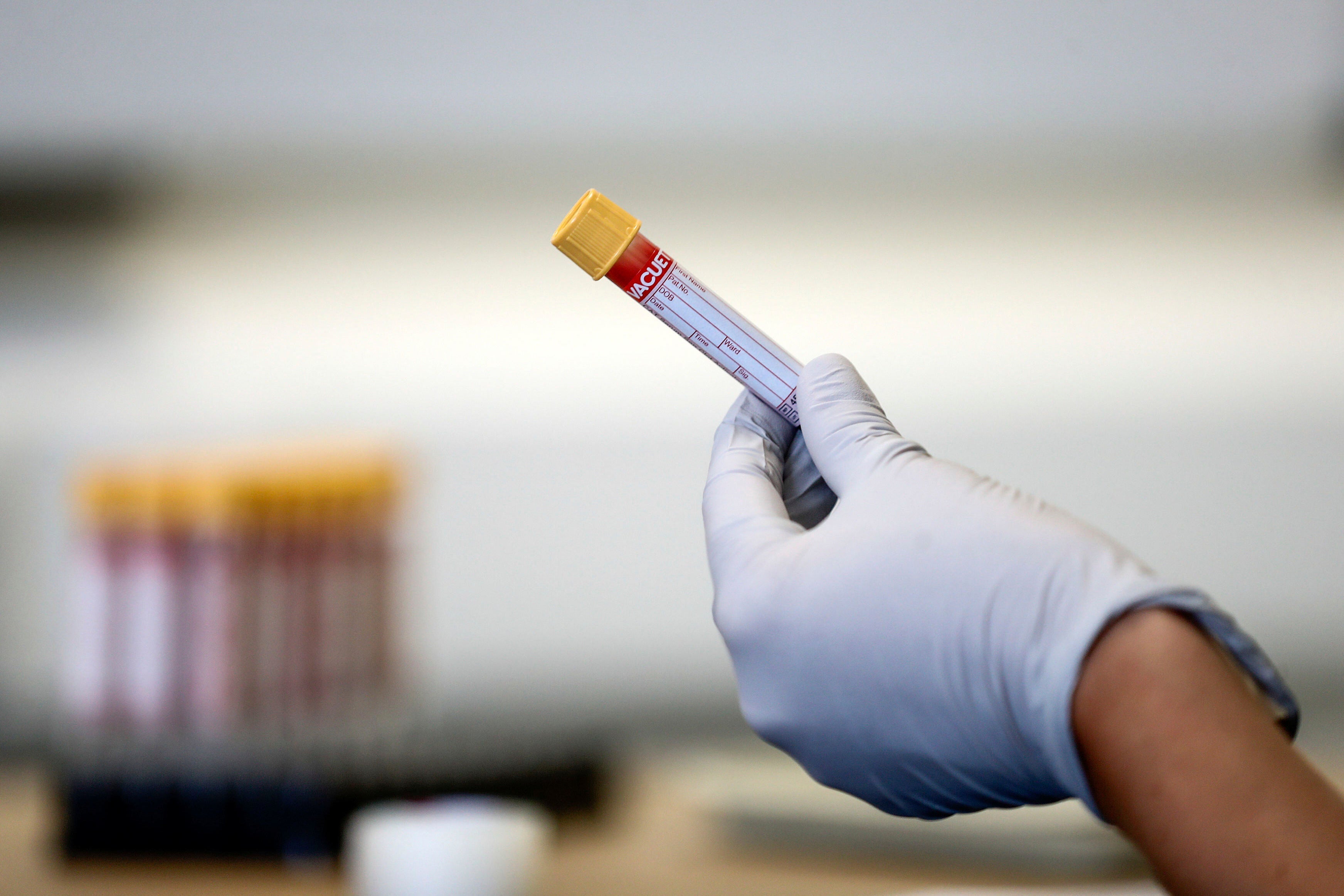
Two studies now show that coronavirus antibodies, a key aspect of a person’s immune response, can disappear over a matter of months. The results are hardly conclusive, and to date there has been no scientific proof of reinfections, but they have precedent.
Shaman says studies that his group has conducted of other common coronaviruses show they can reinfect people. By tracking infected New Yorkers, Shaman was able to show, for example, that coronaviruses that cause the common cold sometimes reinfected the study’s participants more than once.
“Some of them were four to eight weeks separated — that’s rapid, and that might have been a relapse [of the same infection],” he says. “But others we know are different — they were eight to 11 months apart.”
The coronavirus that causes COVID-19 hasn’t been around long enough in most places to cause reinfections, but that may change this fall and winter.
“If it’s like other coronaviruses … we’re going to start to see some of those reinfections in the next six to 12 months” says Greta Bauer, an epidemiologist at Western University in Ontario.
Antibodies are not the only way the immune system fights a disease like COVID-19, and it may be that other types of immune cells ramp up to quickly fight off infection. But if people can be mildly reinfected, then herd immunity simply would not work.
“If immunity is only temporary, then the epidemic may not ‘end,’ ” Neil Ferguson, a disease modeler at Imperial College London, told NPR in an email. “Rather, we may see a transition from epidemic dynamics to endemic circulation of the virus in the human population, albeit at lower levels.”
Pursuing herd immunity deliberately now seems more ethically dubious than ever for elected officials, Bauer says, given that individual recovery from COVID-19 also appears to be a fraught process. A significant portion of COVID-19 survivors suffer fatigue, blood clots, fevers and other symptoms for weeks and months after clearing the infection.
“We know very little about the long-term effects for people with mild disease,” Bauer says. “We don’t know if the virus survives in reservoirs in the body, we don’t know if it can cause disease later in life, and that’s the really difficult part for decision-making.”
In the end, even if natural herd immunity is achieved or partially achieved in the absence of a vaccine, it will likely be seen as a sign of a government’s failure to protect its people. In the U.S., subgroups of the population — groups of essential workers, for example — may approach herd immunity, says Sarah Cobey, an associate professor and researcher studying pathogens and human immunity at the University of Chicago. But that would be the result of what she describes in an email as an “appalling inability to manage the epidemic — specifically, to provide the support people need to protect themselves and not infect others.”
Nations like Qatar, which has seen huge waves of infection spread through groups of immigrant laborers, may also approach herd immunity soon, says Shaman. “That’s a country to keep your eye on,” he says.
But assuming a vaccine or effective treatments can be developed, Shaman says, the Qatars of the world won’t be viewed as the winners. Instead, nations that can safely shield their population the longest will come out ahead. “South Korea, Vietnam, New Zealand, Japan — these are going to be success stories,” he says.
Those nations have suppressed the virus through an initial lockdown, coupled with sustained contact tracing and isolation of sick individuals. That approach, combined with some social distancing and widespread use of masks, can quash the virus to levels where normal life can more or less resume — as long as elected officials, public health leaders and the public continue after that to work in concert to contain any outbreaks.
Sridhar says that Scotland is currently pursuing such a “zero COVID” strategy, and although it hasn’t eliminated the coronavirus entirely, it appears to be working.
“Pubs are open, bars are open, kids are in playing in the parks,” Sridhar says. “Schools are going to go back full time, and infections are so low that people can feel safe doing that. It’s a painful process and it does take time, but there are ways you can stop it.”
9(MDAzMzI1ODY3MDEyMzkzOTE3NjIxNDg3MQ001))


![CoronavirusPandemic_1024x512[1]](https://whyy.org/wp-content/uploads/2020/03/CoronavirusPandemic_1024x5121-300x150.jpg)
